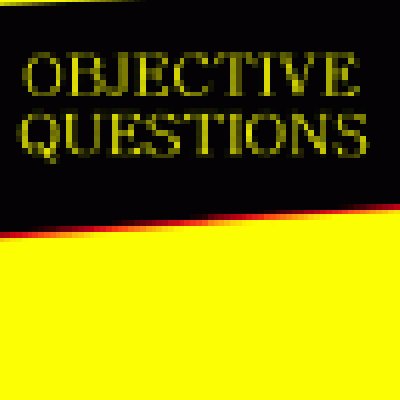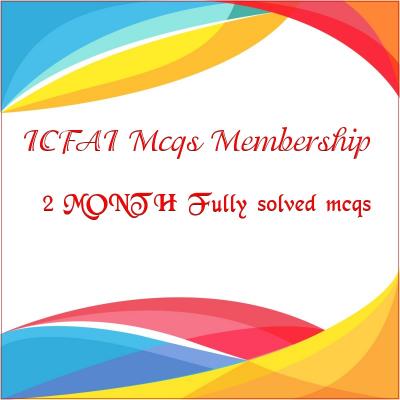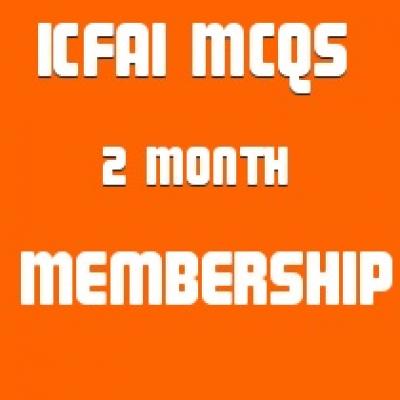QUANTITAIVE TECHNIQUES
Price:
Rs350
PTU university mba QUANTITAIVE TECHNIQUES SOLVED PAPERS AND GUESS
Product Details: PTU university mba QUANTITAIVE TECHNIQUES SOLVED PAPERS AND GUESS
Pub. Date: NEW EDITION APPLICABLE FOR Current EXAM
Publisher: MEHTA SOLUTIONS
Edition Description: 2019-20
RATING OF BOOK: EXCELLENT
ABOUT THE BOOK
FROM THE PUBLISHER
If you find yourself getting fed up and frustrated with other PTU University book solutions now mehta solutions brings top solutions for PTU university mba QUANTITAIVE TECHNIQUES SOLVED PAPERS AND GUESS book contains previous year solved papers plus faculty important questions and answers specially for PTU University .questions and answers are specially design specially for PTU University students .
Please note: All products sold on mbabooksindia.com are brand new and 100% genuine
- Case studies solved
- New addition fully solved
- last 5 years solved papers with current year plus guess
QUANTITAIVE TECHNIQUES
QUANTITAIVE TECHNIQUES
Objective: The objective of this paper is to acquaint the students with quantitative and
operations research techniques that play an important role in managerial decisionmaking.
Unit I
Introduction to Statistics: Meaning,Definition in singular and plural sense, Features
of statistics,Importance , Functions, Scope and Limitations of Statistics.
Measures of Central Tendency: Mathematical averages including arithmetic mean,
geometric mean and harmonic mean, properties and applications. Positional Averages:
Mode and median (and other partition values including quartiles, deciles and percentile.
Graphic presentation of measures of central tendency.
Measures of Variation: Absolute and relative measures. Range, quartile deviation,
mean deviation, standard deviation and their coefficients. Properties of Standard
Deviation and Variance. Moments Concept, calculation and Significance. Skewness:
Meaning, Measurement using Karl Pearson and Bowley Measures. Concept of
Kurtosis.
Unit II
Simple Correlation Analysis: Meaning of Correlation:Simple ,multiple and
partial,linear and non linear correlation, correlation and causation ,scatter
diagram,pearson’s correlation coefficient,calculation and properties of coefficient,Rark
Correlation.
Simple Regression Analysis: Meaning of Regression,Principle of least square and
regression analysis,Calculation of regression coefficient,properties of regression
coefficient,Relationship between correlation and regression cpoefficientg.
Theory of Probability: Meaning of Probility, Approaches to the calculation of
probabability.calculation of event probabbilities,Addition and Multiplication Laws of
Probabbility (Proof not required),Conditional Probability and Bayes’ Theorem (Proof
not required).
Unit III
Probabability Distribution: Binomial Distribution, Poission Distribution and Normal
Distribution with threir properties ad applications.
Linear Programming; Formulation of linear programming problems. Solution by
Graphic method and by using Simplex method algorithm including Big-M method.
Business applications of LP. Degeneracy. Duality. Post-optimality analysis.
Game Theory: Two-person zero-sum games. Games of pure strategies and Games of
mixed strategies. Rule of dominance. Graphic solution to games. Business applications.
Unit IV
Transportation: Transportation problem: Initial feasible solution using North-west
Corner Rule; Least Cost Method; and Vogel’s Approximation Method. Testing
optimality using MODI method.
Assignment Problems: Assignment problem: Solution using Hungarian Assignment
Method.
Project Scheduling: PERT/CPM: Project networks. Scheduling of projects with
known activity times – Critical path and scheduling of activities.
Managerial Economics
Objective: The objective of the paper is to acquaint the students with the economic
concepts and principles and to enable them to use them to address business problems in
a globalized economic environment.
Unit-I
Introduction to Managerial Economics: Managerial Economics: Meaning, Nature,
Scope & Relationship with other disciplines, Role of managerial economics in decision
Making, Opportunity Cost Principle, Production Possibility Curve, Incremental
Concept, Scarcity Concept.
Demand: Demand and its Determination: Demand function; Determinants of demand;
Demand elasticity – Price, Income and cross elasticity, Use of elasticity for analyzing
demand, Demand estimation. Demand forecasting, Demand forecasting of new
product.
Indifference Curve Analysis: Meaning, Assumptions, Properties, Consumer
Equilibrium, Importance of Indifference Analysis, Limitations of Indifference Theory.
Unit-II
Production Function : Production function Meaning, Concept of productivity and
technology, Short Run and long run production function, Isoquants; Least cost
combination of inputs, Producer’s equilibrium; Returns to scale; Estimation of
production function. Theory of Cost: Cost Concepts and Determinants of cost, short
run and long run cost theory, Modern Theory of Cost, Relationship between cost and
production function. Revenue Curve: Concept of Revenue, Different Types of
Revenues, concept and shapes of Total Revenue ,Average revenue and marginal
revenue, Relationship between Total Revenue ,Average revenue and marginal revenue,
Elasticity of Demand and Revenue relation.
Unit-III
Market Structure: Market Structure: Meaning, Assumptions and Equilibrium of
Perfect Competition, Monopoly, Monopolistic Competition, Oligopoly: Price and
output determination under collusive oligopoly, Price and output determination under
non-collusive oligopoly, Price leadership model. Supply: Introduction to supply and
supply curves. Pricing: Pricing practices; Commodity Pricing: Economics of
advertisement costs; Types of pricing practices. Factor Pricing: Demand and supply of
factors of production; Collective bargaining, Concept of rent, profit, interest- Rate of
return and interest rates; Real vs. Nominal interest rates. Basic capital theory–Interest
rate and return on capital, Measurement of profit.
Unit-IV
Product market: Saving and Investment function, Consumption function, Aggregate
supply and Aggregate demand, Investment multiplier, Foreign trade and budget
multiplier. Money market: Motive for holding money; Liquidity preference, Money
demand, Money market equilibrium. IS-LM Analysis: Derivation of nominal IS-LM
and equilibrium. National Income: Conceptual Framework, Measures of National
Income, Methods of Measurement, Limitations of National Income. Consumption
Function: Meaning, and Nature, Determinants and Measures to Raise Propensity to
Consume. Keynes Psychological Law of Consumption - Meaning, Properties and
FULLY SOLVED BOOK LASY 5 YEARS PAPERS SOLVED PLUS GUESS
FOUNDATIONS OF MANAGEMENT
Objective: This course presents a thorough and systematic coverage of management
theory and practice. The course aims at providing fundamental knowledge and
exposure of the concepts, theories and practices in the field of management. It focuses
on the basic roles, skills and functions of management, with special attention to
managerial responsibility for effective and efficient achievement of goals.
Unit I
Introduction: Definition, nature, scope, importance, Functions of management and
manager, Managerial roles and skills.
Evolution of management thought and Management thinkers: Classical Approach,
Neo Classical Approach, Quantitative approach, Behavioral approach, Systems
approach, Contingency approach. Contributions of F. W. Taylor, Henry Fayol, Mary
Parker Follet, Chester Bernard, Max Weber, Peter, F. Drucker, Gilbreths, Henry Gantt,
Abraham Maslow, Herzberg and McGregor.
Unit II
Planning: Importance, types of plans, and process of planning, business forecasting,
MBO: Concept, importance, process, benefits and limitations.
Strategic management: Nature, importance, purpose, types, process and major kinds
of strategies, McKinsey's 7-S Approach.
Decision-Making: Importance, types, steps and approaches, Decision Making in
various conditions, Decision tree.
Unit III
Organizing: Concept and process of organizing, Formal Vs Informal organization,
Organizational structure: Types of Organizational structure, Bases of
Departmentalization. Line &Staff: concept, line-staff conflict.
Authority & Power: concept, responsibility and accountability. Delegation: concept,
importance, factors affecting delegation, effective delegation, Span of Management,
Decentralization and centralization, Staffing, importance and process. Coordination:
Concept, importance, difficulties and techniques to ensure effective coordination.
Unit IV
Control: Concept, importance, characteristics, process of control, types and techniques
of control.
Comparative study: Japanese Management and Z-culture of American Companies,
Chinese Style Management,
Modern management techniques: an overview of various latest techniques: Business
process Re-engineering, Business outsourcing, knowledge management, E-Business
Management.
Note: Relevant Case Studies should be discussed in class.
1. Books by courier
2. Delivery in 5-7 days
3. Courier india only
4. Rating of product : largest selling







